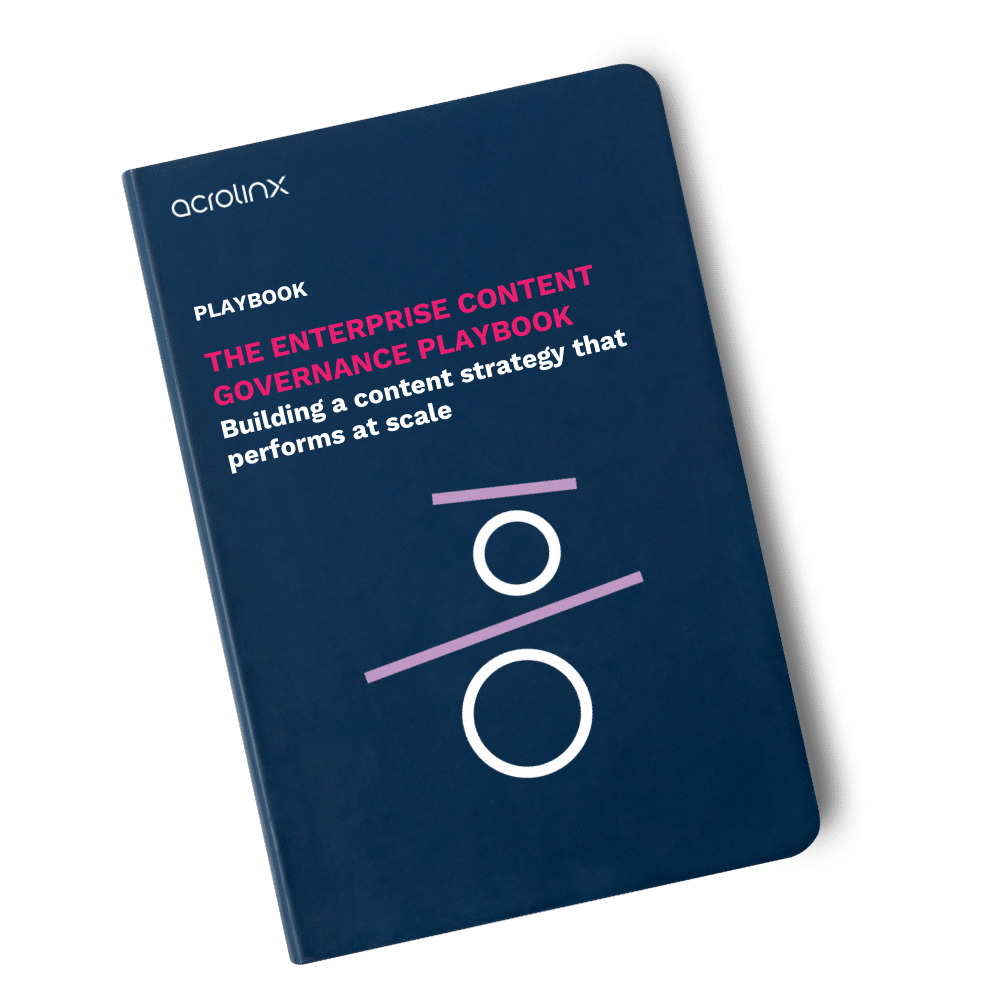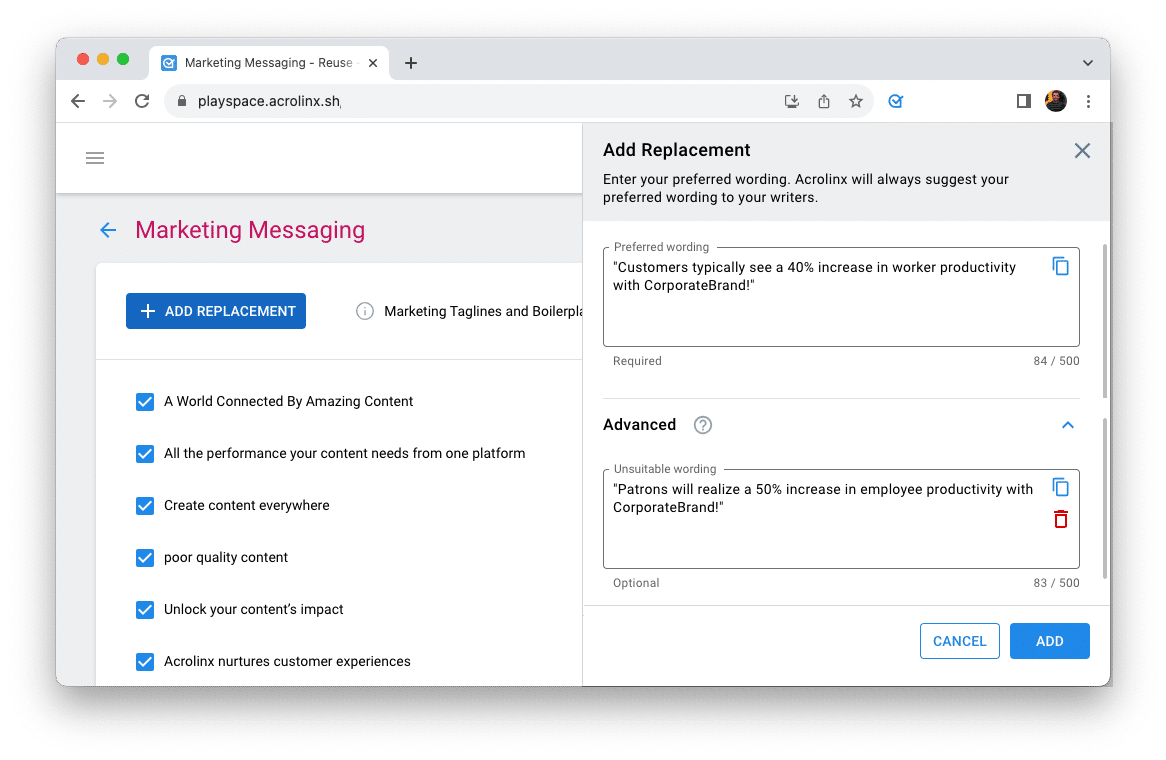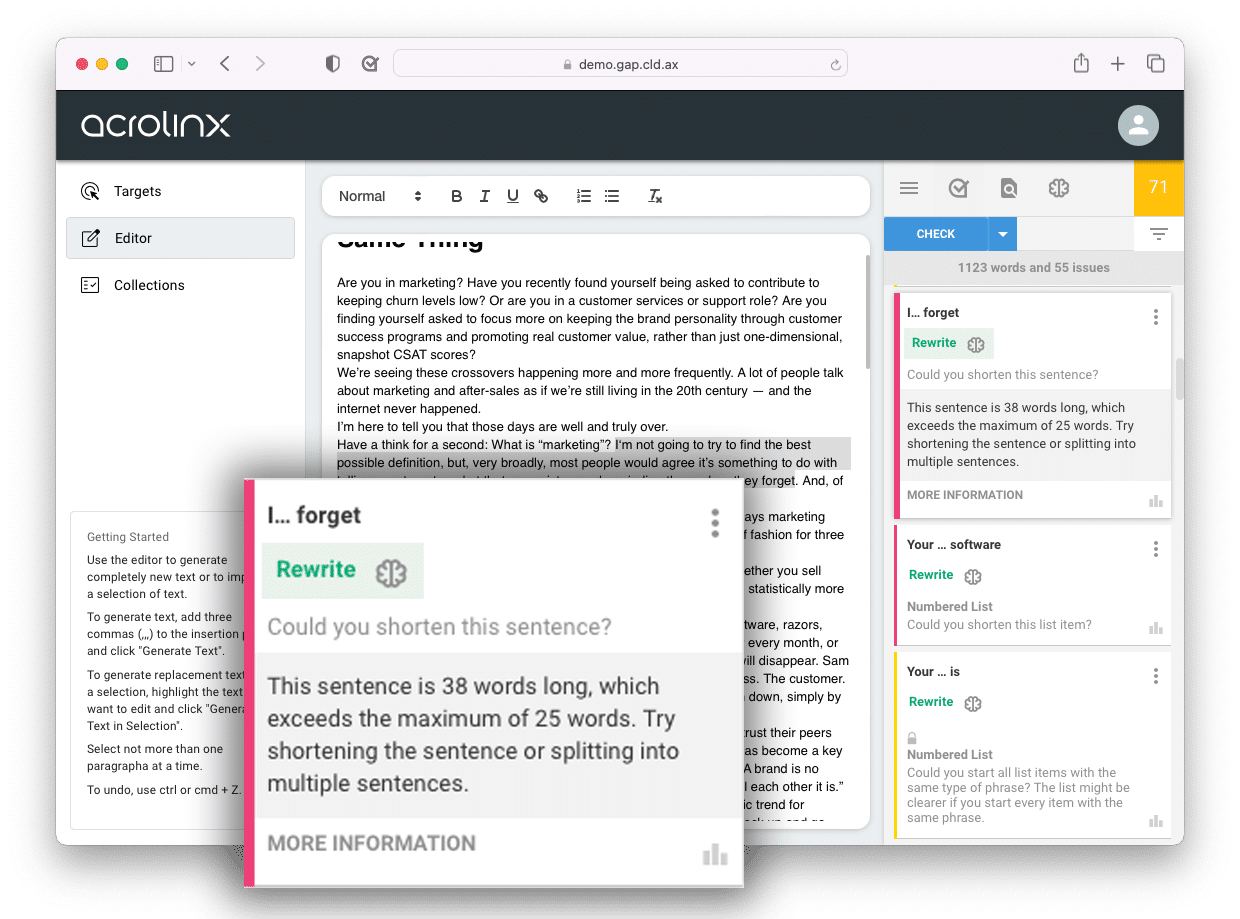
These days, information is abundant and attention spans are fleeting. Breaking through the clutter to engage your audience has become even more challenging. To get your message to your target audience, you need strategic organic content that not only captivates your readers but also addresses their specific needs without overwhelming them with too much information.
This is where you’re relying on a good content strategy. To create compelling content that also meets your business goals, you need content that meets the expectations of your target audience. The success of your content depends not only on your brand voice and message, but the way you use language spark curiosity, educate, support, and motivate action.
Strategic content creation goes beyond captivating prose; it involves filtering out irrelevant information and presenting only the most valuable insights that cater to your readers’ current needs. By maintaining a delicate balance between relevance and information, we can cultivate trust and credibility, positioning your brand as a leader in your field within the financial services industry.
The importance of audience-centric content
Tailoring your content to speak to a specific audience means using language that shows you understand the specific needs, preferences, and interests of your target audience. It means your content resonates on a personal level. Audience centric-content benefits your business with:
- Improved relevance: Tailoring content to cater to the financial needs and goals of our target audience improves the relevance of your offerings. When financial content directly addresses customer investment objectives, risk appetite, or financial planning concerns, it sparks their interest and trust in your services.
- Increased engagement and informed decision-making: Customized financial content captivates the audience’s attention and fosters engagement. By providing tailored insights and information, you can enable individuals to make informed financial decisions that align with their unique circumstances.
- Building trust and credibility: Addressing the specific financial challenges and providing relevant solutions establishes us as credible experts in the financial services industry. This fosters trust among potential customers, leading to long-term relationships and customer retention.
- Personalized solutions for financial needs: Content should always seek to identify and address the specific pain points and aspirations of your target audience. By offering personalized solutions, such as investment strategies, retirement planning, or tax optimization, you become valuable partners in their financial journey.
- Creating a personal connection: Customized content in financial services nurtures a personal connection between customers and advisors. Customers feel understood and supported in their financial goals, leading to a deeper sense of loyalty and commitment to your financial institution.
- Clear and effective financial communication: It’s important to make sure you’re clear and concise. Whether explaining complex financial concepts or outlining investment options, personalized content aids in better comprehension and encourages action.
- Improved content delivery across channels: Understanding the preferences of your target audience allows you to optimize content for specific platforms and channels. This makes sure that financial information reaches them through their preferred channels, such as email newsletters, blogs, or social media updates.
- Gaining a competitive edge: Turn content into a competitive edge in the financial services sector. By offering personalized financial advice and solutions, we stand out in a crowded market, attracting customers who value a bespoke approach to their financial well-being.
Pre-approved messaging with Acrolinx
Once you’ve honed the messaging you think sets you apart from the competition, and is personalized to your target audience, you can add it to Acrolinx. That way any content your writers create will be instantly aligned with your pre-approved messaging. Take a look at what that looks like in the software, below.
The power of strategic organic content
Building an organic content strategy is key to improving leads and conversions. First, organic content helps establish trust and credibility. By providing clear, accurate, and relevant information, your brand positions itself as a reliable partner in helping customers navigate complex financial decisions. Trust is a critical factor in converting leads into loyal clients, particularly in regulated industries like finance.
Second, organic content enhances your visibility and discoverability. By optimizing content for search engines (SEO), your financial services firm becomes more likely to appear when potential clients search for answers to their financial questions.
Finally, organic content fosters long-term relationships by consistently engaging your audience. When customers feel supported with personalized solutions — such as investment advice or financial planning tools — they are more likely to take action and choose your services.
An effective organic strategy ensures your content connects with the right people at the right time, driving leads and conversions naturally.
The power of concise content
Clear, concise storytelling cuts through the noise, leaving a lasting impact on your audience. Embracing brevity allows you to deliver powerful insights, making your content more engaging, memorable, and easily digestible. Below are some tips on how to distill complex ideas into concise language:
Tips for Distilling Complex Ideas into Succinct Messages Explanation 1. Focus on the Core Message Identify the central idea you want to convey and craft your message around it. Eliminate unnecessary details to maintain clarity. 2. Use Clear and Precise Language Choose words carefully to express your point. Avoid jargon or technical terms that may confuse your readers. 3. Trim Redundancies Review your content to eliminate redundant phrases or information. Keep only the most relevant elements to avoid overwhelming readers. 4. Break Down Complex Concepts If addressing intricate concepts, break them into smaller, easy-to-read components to facilitate comprehension. 5. Create Impactful Headlines Craft attention-grabbing headlines that succinctly convey the essence of your message. Engaging titles entice readers to explore further. 6. Use Bullet Points and Lists Organize information into bullet points or lists for improved readability. This format allows readers to scan key points quickly. 7. Edit and Revise Be ruthless in editing your content. Review your writing multiple times to refine and simplify your message further. 8. Stay Relevant to Your Audience Tailor your message to resonate with the interests and needs of your target audience. Personalized content garners more attention. 9. Embrace Visuals Use visuals such as graphs, charts, or infographics to present complex data in a concise and engaging manner. 10. Test Readability Check the readability of your content using tools like Flesch-Kincaid or Gunning Fog Index. Aim for a clear and accessible reading level.
Creating clear content with Acrolinx
At Acrolinx, we notice that there’s a connection between clarity and conversion rates. That’s because the easier it is for customers to understand what it is you’d like them to do – the easier it is for them to complete the action! You don’t need to be an expert at writing haiku to shorten your sentences: Acrolinx will not only find the areas in your text that are too wordy, there’s also the possibility to get Acrolinx to rewrite it for you.
Balancing content relevance and accuracy
Content that aligns with the needs and interests of your target audience fosters a strong connection and keeps them engaged. To avoid inaccurate information while offering valuable insights, it’s crucial to conduct thorough audience research. Understand your audience’s pain points, aspirations, and preferences to tailor your content accordingly.
Stay focused on your central message, omitting tangential or extraneous details that might be distracting. Use clear and concise language, and structure information in a logical and organized manner. When you’re done, monitor engagement metrics to gauge the relevance of your content. If possible, use technology that’s designed for enterprise-wide content governance that connects your content goals with performance metrics.
Balancing relevant, engaging content with accurate information is particularly important in the financial services industry. Banks are subject to various regulations and guidelines that restrict what they can say in their marketing content. Some of the key limitations include:
- False or misleading information: Banks can’t make false or misleading statements about their products, services, or benefits. They must provide accurate and truthful information to avoid deceiving customers.
- Guarantees of returns: Banks are generally not allowed to guarantee specific returns on investments or savings accounts unless they are offering a specific product that has been approved and regulated accordingly.
- Unfair or discriminatory practices: Banks can’t engage in discriminatory practices or promote non-inclusive content in their marketing materials. This includes any form of discrimination based on race, gender, religion, nationality, or any other protected characteristic.
- Confidentiality breaches: Banks are legally bound to maintain the confidentiality of their customers’ personal and financial information. They can’t disclose any confidential customer details in their marketing content without proper consent.
- Non-compliance with regulatory requirements: Banks must follow various regulatory requirements, such as those related to consumer protection, anti-money laundering (AML), and know-your-customer (KYC) regulations. They can’t promote products or services that violate these regulations.
- Misrepresentation of affiliations: Banks can’t falsely claim affiliations with government agencies or other recognized organizations in their marketing content. They must accurately represent their partnerships, sponsorships, or associations.
- Unsubstantiated claims: Banks must have enough evidence to support any claims made in their marketing materials. They can’t make unsupported statements about their products’ features, benefits, or performance.
It’s important to note that specific regulations may vary by country and jurisdiction. Banks work closely with legal and compliance teams to make sure their marketing content complies with applicable laws and regulations. So when creating compelling marketing content in financial services, making sure it’s relevant is one thing, but it’s even more important to make sure you’re not telling a great story at the expense of clear and compliant communication.
Create compliant content with Acrolinx
The thing about rules and regulations is that they occasionally change. Which means you need to regularly audit and update your content. Acrolinx provides a few different ways to check if there are compliance issues in your content.
One way is to check your content at regular intervals (we recommend weekly) for compliance and quality issues. Published web pages receive Acrolinx Scores for quality. The system can then prioritize issues by type, including compliance, and export and send detailed information to the content team. These details include the type of content, its location, the specific issue or problem, and a clickable replacement to fix it.
Practice simple writing
Information overload is a real challenge that can lead to disengagement and overwhelm among our audience. And when it comes to internal communications, information overload has dire consequences for your business.
Choice and information overload is distracting, which means employees accomplish less. And too often, strategic priorities take a backseat to small, attention-grabbing tasks.
To combat this, it’s crucial to adopt effective strategies that present information in a manner that is easily digestible and readily absorbed by our readers. Let’s explore some key techniques to avoid overwhelming our audience with information:
- Present information in digestible formats: Breaking down complex content into bite-sized pieces is an effective way to keep readers engaged. Use concise paragraphs and avoid lengthy monologues that might discourage readers from diving into your content. Instead, opt for shorter sentences and paragraphs, making it easier for readers to grasp your message quickly.
- Improve readability with bullet points, lists, and subheadings: Bullet points, lists, and subheadings act as visual signposts, guiding readers through your content with ease. These formatting elements help organize information, making it scannable and accessible. They highlight key takeaways, allowing readers to absorb crucial points even when skimming through the content.
- Organize content for easy comprehension: Effective organization is paramount in content creation. Use a clear and logical structure, starting with an engaging introduction and concluding with a compelling summary. Create sections that flow seamlessly, building upon one another to construct a coherent story. By maintaining a logical flow, you make sure that readers can navigate your content effortlessly, increasing their overall comprehension.
Remember, adopting these strategies not only stops information overload for your audience but also reinforces your content’s value and credibility. By presenting information in digestible formats, using visual aids, and organizing content thoughtfully, you can power an exceptional customer experience – within a highly regulated industry.
Improve financial content marketing with Acrolinx
With content overload and shorter attention spans, engaging your target audience has become challenging. A solid content strategy is vital to captivate readers, meet their needs, and reach your business goals. Strategic content creation filters irrelevant information and offers only valuable insights. By using clear, concise, and relevant content to build trust and credibility it helps you establish your brand as a financial industry leader.
Acrolinx’s AI-powered software assists in maintaining consistency across all content, ensuring that the brand voice remains strong and resonates with the target audience. The software’s ability to analyze language and tone helps in crafting compelling messages that spark curiosity, educate, and motivate action. And with options for automated checks, you can cover 100% of your content at any stage in the content lifecycle.
Acrolinx also helps you structure content so it’s clear and readable, making sure that final content aligns precisely with your audience’s needs. With Acrolinx as an ally, financial service providers can streamline their content strategy, deliver concise and engaging material, and keep content compliant in a highly regulated industry.
Are you ready to create more content faster?
Schedule a demo to see how content governance and AI guardrails will drastically improve content quality, compliance, and efficiency.

Kiana Minkie
She comes to her content career from a science background and a love of storytelling. Committed to the power of intentional communication to create social change, Kiana has published a plethora of B2B content on the importance of inclusive language in the workplace. Kiana, along with the Acrolinx Marketing Team, won a Silver Stevie Award at the 18th Annual International Business Awards® for Marketing Department of the Year. She also started the Acrolinx Diversity and Inclusion committee, and is a driving force behind employee-driven inclusion efforts.








